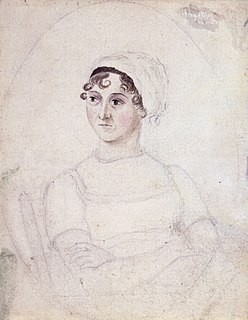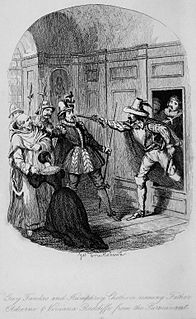
Gothic fiction, sometimes called Gothic horror in the 20th century, is a genre of literature and film that covers horror, death and at times romance. It is said to derive from the English author Horace Walpole's 1764 novel The Castle of Otranto, later subtitled "A Gothic Story". Early contributors included Clara Reeve, Ann Radcliffe, William Thomas Beckford and Matthew Lewis. It tends to stress emotion and a pleasurable terror that expands the Romantic literature of the time. The common "pleasures" were the sublime, which indescribably "takes us beyond ourselves." Such extreme Romanticism was popular throughout Europe, especially among English and German-language authors. Its 19th-century success peaked with Mary Shelley's Frankenstein and work by E. T. A. Hoffmann, Edgar Allan Poe and Charles Dickens, and in poetry with Samuel Taylor Coleridge. Also prominent was the later Dracula by Bram Stoker. The name Gothic spread from the Goths to mean "German". It also draws in Gothic architecture of the European Middle Ages, where many of the stories occur. Twentieth-century contributors include Daphne du Maurier, Stephen King, Shirley Jackson, Anne Rice and Toni Morrison.

Jane Austen was an English novelist known primarily for her six major novels, which interpret, critique and comment upon the British landed gentry at the end of the 18th century. Austen's plots often explore the dependence of women on marriage in the pursuit of favourable social standing and economic security. Her works critique the novels of sensibility of the second half of the 18th century and are part of the transition to 19th-century literary realism. Her use of biting irony, along with her realism, humour, and social commentary, have long earned her acclaim among critics, scholars, and popular audiences alike.

Pride and Prejudice is an 1813 romantic novel of manners written by Jane Austen. The novel follows the character development of Elizabeth Bennet, the dynamic protagonist of the book who learns about the repercussions of hasty judgments and comes to appreciate the difference between superficial goodness and actual goodness. Its humour lies in its honest depiction of manners, education, marriage, and money during the Regency era in Great Britain.

Northanger Abbey is a coming-of-age novel and a satire of Gothic novels written by Jane Austen. It was completed in 1803, the first of Austen’s novels completed in full, but was published posthumously in 1817 with Persuasion. The story concerns Catherine Morland, the naïve young protagonist, and her journey to a better understanding of herself and of the world around her.
Ann Radcliffe was an English author and a pioneer of Gothic fiction. Her technique of explaining apparently supernatural elements in her novels has been credited with gaining Gothic fiction respectability in the 1790s. Radcliffe was the most popular writer of her day and almost universally admired; contemporary critics called her the mighty enchantress and the Shakespeare of romance-writers, and her popularity continued through the 19th century. Interest has revived in the early 21st century, with the publication of three biographies.
This article contains information about the literary events and publications of 1797.
Elizabeth Meeke was a prolific English author, translator and children's writer, and the stepsister of Frances Burney. She wrote about 30 novels, published by the Minerva Press in the late 18th and early 19th centuries. They appeared mainly under the name Mrs. Meeke, sometimes under the pseudonym Gabrielli, and a few anonymously.

Sophia Lee was an English novelist, dramatist and educator. She was a formative writer of Gothic fiction.
Minerva Press was a publishing house, noted for creating a lucrative market in sentimental and Gothic fiction in the late 18th century and early 19th century. It was established by William Lane at No 33 Leadenhall Street, London, when he moved his circulating library there in about 1790.
Michael Sadleir, born Michael Thomas Harvey Sadler, was a British publisher, novelist, book collector, and bibliographer.

Sir Anthony Carlisle FRCS, FRS was an English surgeon.

Charlotte Temple is a novel by British-American author Susanna Rowson, originally published in England in 1791 under the title Charlotte, A Tale of Truth. It tells the story of a schoolgirl, Charlotte Temple, who is seduced by a British officer and brought to America, where she is abandoned, pregnant, sick and in poverty. The first American edition was published in 1794 and the novel became a bestseller. It has gone through over 200 American editions. Late in life, the author wrote a sequel that was published posthumously.
Isabella Kelly, née Fordyce, also Isabella Hedgeland (1759–1857) was a Scottish novelist and poet. Her novels have been said to resemble those of Ann Radcliffe.
Elizabeth Bonhôte, née Mapes was an English novelist, essayist and poet. Her most successful work was Bungay Castle, a Gothic romance written after her husband had bought the ruins of the real Bungay Castle.
Francis Lathom was a British gothic novelist and playwright.
Margaret Emma Faith Irwin was an English historical novelist. She also wrote a factual biography of Sir Walter Raleigh.

St. Irvyne; or, The Rosicrucian: A Romance is a Gothic horror novel written by Percy Bysshe Shelley in 1810 and published by John Joseph Stockdale in December of that year, dated 1811, in London anonymously as "by a Gentleman of the University of Oxford" while the author was an undergraduate. The main character is Wolfstein, a solitary wanderer, who encounters Ginotti, an alchemist of the Rosicrucian or Rose Cross Order who seeks to impart the secret of immortality. The book was reprinted in 1822 by Stockdale and in 1840 in The Romancist and the Novelist's Library: The Best Works of the Best Authors, Vol. III, edited by William Hazlitt. The novella was a follow-up to Shelley's first prose work, Zastrozzi, published earlier in 1810. St. Irvyne was republished in 1986 by Oxford University Press as part of the World's Classics series along with Zastrozzi and in 2002 by Broadview Press.

The novel Guy Fawkes first appeared as a serial in Bentley's Miscellany, between January and November 1840. It was subsequently published as a three-volume set in July 1841, with illustrations by George Cruikshank. The first of William Harrison Ainsworth's seven "Lancashire novels", the story is based on the Gunpowder Plot of 1605, an unsuccessful attempt to blow up the Houses of Parliament. Ainsworth relied heavily on historical documents describing the trial and execution of the conspirators, of whom Fawkes was one, but he also embellished the known facts. He invented the character of Viviana Radcliffe, daughter of the prominent Radcliffe family of Ordsall Hall – who becomes Fawkes's wife – and introduced gothic and supernatural elements into the story, such as the ability of the alchemist, John Dee, to raise the spirits of the dead.
Mrs F. C. Patrick was an 18th-century writer of Gothic fiction with at least three novels to the name. She was one of the earliest female writers of Gothic fiction.

Wolfstein; or, The Mysterious Bandit is an 1822 chapbook based on Percy Bysshe Shelley’s 1811 Gothic horror novel St. Irvyne; or, The Rosicrucian.










